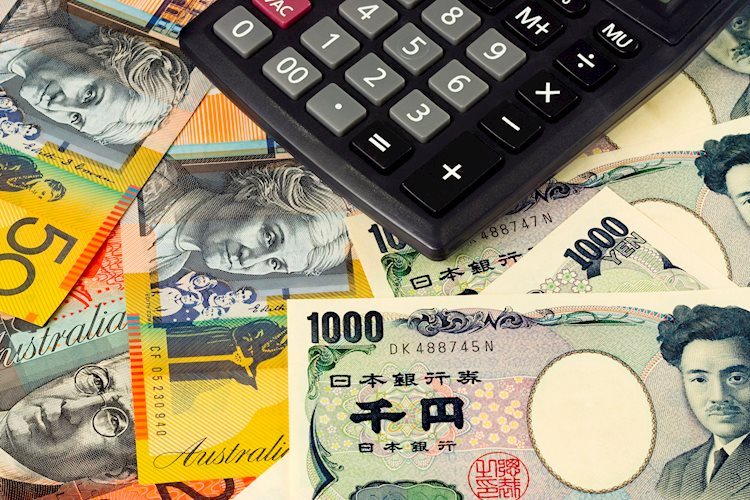- AUD/JPY gains ground as Yen buyers adopt caution due to political instability in Japan.
- Japan’s Producer Price Index increased by 3.4% YoY in October and rose by 0.2% MoM.
- Australian PM Anthony Albanese shared about trade discussions with US President-elect Donald Trump during a phone call last week.
AUD/JPY extends its gains for the third successive day, trading around 101.20 during European hours on Wednesday. The rise in the AUD/JPY pair is largely due to the weakened Japanese Yen (JPY), fueled by growing doubts over future rate hikes by the Bank of Japan (BoJ). Japan’s fragile minority government is expected to complicate any plans for tightening monetary policy.
On the data front, the BoJ’s preliminary report on Wednesday showed that Japan’s Producer Price Index (PPI) increased by 3.4% year-over-year in October, exceeding expected 3.0% and previous 3.1% readings. Meanwhile, the PPI rose by 0.2% month-over-month, surpassing the expected flat growth for the month.
Meanwhile, the BoJ’s Summary of Opinions from its October meeting highlighted division among policymakers regarding additional rate hikes. Nevertheless, the central bank maintained its outlook, suggesting it could raise its benchmark rate to 1% by the second half of fiscal 2025, amounting to a total policy tightening of 75 basis points from the current rate.
The Australian Dollar (AUD) gained support after a radio interview with Australia’s Prime Minister (PM), Anthony Albanese. Albanese said that he discussed trade relations with US President-elect Donald Trump during a phone call last week. He informed Trump that the US has a trade surplus with Australia and stressed that it’s in Washington’s best interest to maintain “fair trade” with its ally.
On Wednesday, Australia’s Wage Price Index showed a 3.5% year-over-year rise in the third quarter, down from the 4.1% growth seen in the previous quarter and slightly below the anticipated 3.6% increase. This represents the slowest wage growth since Q4 2022. Meanwhile, the quarterly index remained steady at 0.8% in Q3, just under the expected 0.9%.
Central banks FAQs
Central Banks have a key mandate which is making sure that there is price stability in a country or region. Economies are constantly facing inflation or deflation when prices for certain goods and services are fluctuating. Constant rising prices for the same goods means inflation, constant lowered prices for the same goods means deflation. It is the task of the central bank to keep the demand in line by tweaking its policy rate. For the biggest central banks like the US Federal Reserve (Fed), the European Central Bank (ECB) or the Bank of England (BoE), the mandate is to keep inflation close to 2%.
A central bank has one important tool at its disposal to get inflation higher or lower, and that is by tweaking its benchmark policy rate, commonly known as interest rate. On pre-communicated moments, the central bank will issue a statement with its policy rate and provide additional reasoning on why it is either remaining or changing (cutting or hiking) it. Local banks will adjust their savings and lending rates accordingly, which in turn will make it either harder or easier for people to earn on their savings or for companies to take out loans and make investments in their businesses. When the central bank hikes interest rates substantially, this is called monetary tightening. When it is cutting its benchmark rate, it is called monetary easing.
A central bank is often politically independent. Members of the central bank policy board are passing through a series of panels and hearings before being appointed to a policy board seat. Each member in that board often has a certain conviction on how the central bank should control inflation and the subsequent monetary policy. Members that want a very loose monetary policy, with low rates and cheap lending, to boost the economy substantially while being content to see inflation slightly above 2%, are called ‘doves’. Members that rather want to see higher rates to reward savings and want to keep a lit on inflation at all time are called ‘hawks’ and will not rest until inflation is at or just below 2%.
Normally, there is a chairman or president who leads each meeting, needs to create a consensus between the hawks or doves and has his or her final say when it would come down to a vote split to avoid a 50-50 tie on whether the current policy should be adjusted. The chairman will deliver speeches which often can be followed live, where the current monetary stance and outlook is being communicated. A central bank will try to push forward its monetary policy without triggering violent swings in rates, equities, or its currency. All members of the central bank will channel their stance toward the markets in advance of a policy meeting event. A few days before a policy meeting takes place until the new policy has been communicated, members are forbidden to talk publicly. This is called the blackout period.
Read the full article here

